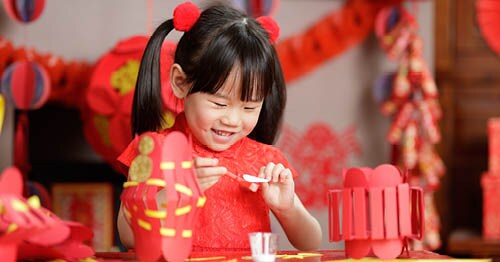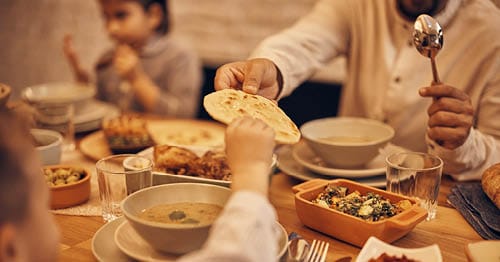5 Ways to Teach Students About Juneteenth
by Connections Academy
byConnections Academy
5 min to readAnswering countless questions throughout the day is something parents know all too well—especially if their young child is in the “Why, why, why?” phase.
Most of the time you can probably get away with a simple response; but when it comes to sensitive topics such as race and diversity, the answer requires more attention and thought.
How do you respond to challenging questions about race and social inequality?
First, remind yourself that a child is simply expressing natural curiosity. There is often a lot of cultural diversity in schools and cities, and children are perceptive enough to notice that some people look, act, and may be treated differently than them.
While you might find it easier to avoid questions about racial and cultural differences—particularly in public—you shouldn’t be. Such questions can be a great opportunity to teach your child about respecting and appreciating differences, including the different cultures children and adults come from.
Experts have found that talking to children about race is a good thing—even at a young age. It’s why there are multiple K-12 programs focused on cultural diversity for kids. And why teachers learn how to promote cultural diversity in school.
Why is cultural diversity important for students? Because it teaches children to respect and appreciate racial and cultural differences in everyone. In an increasingly diverse world, children need an ability to accept and understand others. The more they’re exposed to and learn about cultural differences, the brighter their future can be.
Teaching children about diversity may seem like a daunting task, but there are simple things you can do to integrate these conversations into their daily lives. Take a look at some of the ideas below to help your child embrace different cultures and backgrounds:
Parents are often kids’ favorite and best role models. Since your child most likely looks to you for guidance, make a conscious effort to model compassionate, accepting, and unbiased behavior. For instance, show empathy when watching the news together, and surround yourself with other kindhearted individuals.
If possible, bring your children to work or to family friendly social events where they can see you interacting with many different people. Keep in mind that kids tend to pay more attention to what you do rather than to what you tell them to do.

Go on a cultural adventure! Many communities offer local and inexpensive events to celebrate diversity, so make sure to regularly check event calendars for your area. Not only will your child learn something about a different culture but they also could leave with new friendships and fun memories.
Your child can learn a lot about diversity through movies, TV shows, and books. Try to choose things that feature characters from a wide range of cultural backgrounds. Encourage questions afterward and have an open discussion about the importance of inclusion and acceptance.
Does your child have questions about your—or a friend’s—background? Consider doing some research together, either online or at the library. You can use this as a way to handle those embarrassing questions children tend to ask in public at top volume. Saying “I don’t know, but let’s look it up when we get home” shows that you acknowledge the question, yet it enables you to answer later, in a private setting. Through research into different cultures, children gain insight into diversity while learning to appreciate cultural, racial, and religious differences. You might even discover something new too!

One of the best parts about exploring different cultures is the food. Make it a family night and go to a restaurant with a cuisine you’ve never tried before, or stay home and cook a recipe from a culture different than your own. Your student might be hesitant about trying a new dish, but it could end up becoming their new favorite meal.
Language education is one of the primary ways educators teach cultural diversity in schools. It’s a great way for your child to learn about other cultures—and the language skills they gain can give them an advantage in their future career. You may not realize it, but language is a key factor in how we view and identify with the world around us.
Becoming more familiar with native roots can be an enriching and enjoyable experience. Help your child celebrate your family’s heritage by taking a trip, participating in cultural or religious traditions, or exploring the family tree. Your child will be pleased to reach a stronger sense of identity in the process.
While raising kids to be open minded about diversity is a big responsibility, you can achieve success by modeling inclusive behavior and actively seeking out cultural awareness opportunities.
Ready to help your child understand and celebrate cultural differences? Get started with our article covering 10 ways you can help your child learn about Black history and culture.
by Connections Academy
by Cassandra Polzin
by Dan Belenky
